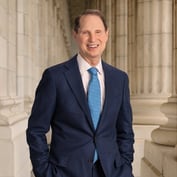Trust, Securities, Insurance Pros Must Learn To Work Cheek by
By Heywood Sloane
Understanding the complexity of securities, insurance and trust professionals working together requires taking a step back as well as taking some steps forward.
We will look at this convergent process, using the banking industry as an example. Particular focus will be on how banks are integrating trust services with other financial services.
As will be seen, bringing the financial disciplines together requires teaming. This has definite benefits, but making it come about is not always easy, since people from different disciplines must now learn to work cheek by .
The onslaught of consolidation flowing from the legalization of interstate banking in the 1980s created the vacuum that enabled traditional securities and insurance professionals to enter the trust business in the 1990s and up to the present.
As banks consolidated, they necessarily took out local banks and trust companies. Trust services, specifically personal trust services, are, as one would expect, highly personal. With consolidation, banks opted for economies of scale that also created diseconomies and dislocations in local markets where personal relationships and continuity are key.
These same economies of scale enabled banks to push into non-traditional businesses to fuel continued growth and build up fee income. It is this push that is bringing the process full circle. Banks have acquired securities firms and hired seasoned investment personnel.
These same depository institutions often have insurance agencies and are well along the way to integrating banking, securities, insurance and trust in “personal banking” or “wealth management” initiatives. However, this is happening on a far different scale than what happened in the Trust Division or Private Banker initiatives of two decades ago. Smaller institutions are, understandably, developing competitive responses.
The parent firms culture–and the relationship of the trust operation to the parents objectives–is a key (if not the key) determinant of an institutions choice of business model. Consider:
In the securities world, growing wealth–as much and as fast as clients tolerance for volatility or losses will bear– is often a defining objective. For independent firms, the financial plan is often the central, differentiating factor. In the insurance industry, the focus is on finding, defining, and containing or mitigating risks.
Each orientation is strikingly different from that of trust services. Trust services are about providing an independent fiduciary to prudently invest, preserve and protect the wealth and interests of a client, and often of their family.
In our work, we have come across three basic models that institutions employ to offer these divergent financial services to their clients. These are: the Competitive Model, the Shared Resource Model and the Team Model.
This article will discuss each model in the bank context, but similar hurdles are present when trust services are integrated into non-bank firms as well.
Competitive Model. This model is simple and quick to implement. Integration occurs at the holding company level in its financials and rarely before that.
In essence, the business lines remain independent and operate in their own silos within the boundaries of the institution. They share a brand and a logo but often little else. The trust administration, legal advice, investment management, operations, sales and service all operate in a self-contained profit center with its own profit and loss measures.
In this environment, teams come together across the organization, but typically this occurs under duress. For example, the teaming occurs when one business line perceives a significant need (for referrals, operating economies, etc.). The professionals involved believe that they can demonstrate to an internal competitor that the solution is in the competitors substantial, direct and near-term interest as well.
An irony is that it is often easier to form teams with outsourced partners in this environment. This removes the political hurdle of demonstrating that the initiative “wont undercut” another internal business. Also removed, however, are potential synergies, incremental profitability and unified client support.
A management device sometimes used in this model is to draw a line based on the size of the account or investment. This often leads to undesired or unexpected results. Examples include understating or isolating assets or investments to keep the total account value under the ceiling that requires prospects to go to the trust area.
If the ceiling is set too low and if the securities and/or insurance sales team is a highly effective one, the referrals could overwhelm the trust area.
Teams that form in this model are held together by the mutual trust and communication between the individuals involved, despite the institutional structures they find themselves in.








 May 25, 2003 at 08:00 PM
May 25, 2003 at 08:00 PM










